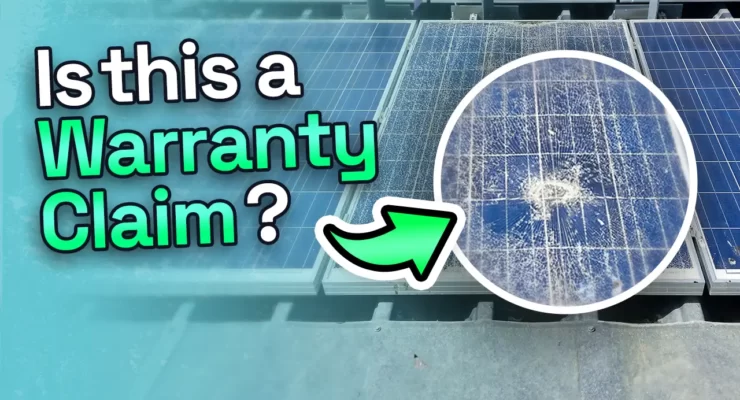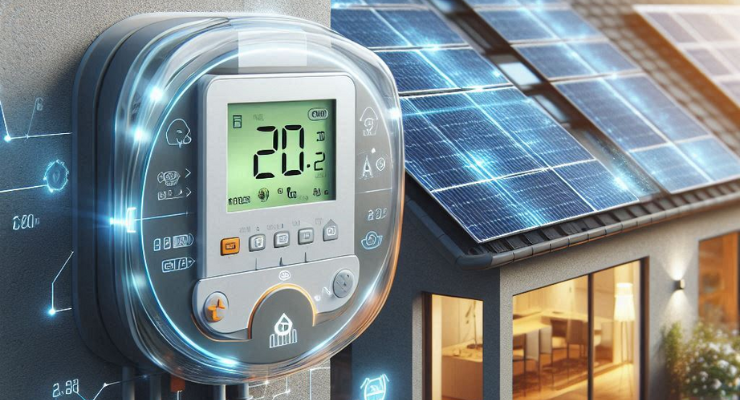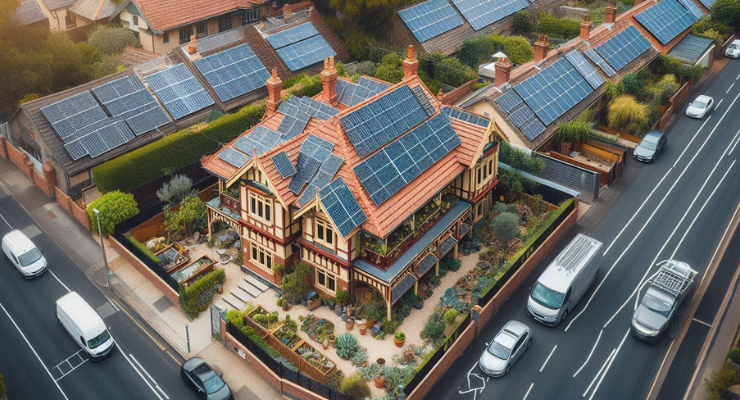Fast read
A solar panel warranty comprises two parts:
The product warranty (12 to 25 years) covers physical panel integrity, while the performance warranty (25 to 30 years) guarantees electricity production. However, claiming the performance warranty is complex, involving panel removal and lab testing.
In practice, the product warranty takes precedence, making product quality critical. If it expires before performance issues surface, claiming the latter is difficult.
To avoid warranty hassles, prioritise high-quality panels from reputable brands with good track records, and understand warranty terms. Ultimately, investing in quality minimises the need for warranty claims.
Why is the solar panel product warranty so much more powerful than the performance warranty?
A warranty is a promise from a product maker or seller that the product will work well for a certain amount of time. A warranty also explains what the maker will do if the products have problems. For solar panels, there are two main kinds of warranties given. These are the product warranty and the performance warranty.
Product Warranty
The product warranty is the main warranty to look at and, depending on the maker and model, used to last between 12 and 15 years. Now, many panel makers have made their product warranties a full 25 years long.
The product warranty looks after the physical build, structure and materials of the panel. This includes the framing, the glass, lamination, the back sheet, the junction box and so on. If the solar panel loses its physical shape and doesn’t work well, then the product warranty covers this.
To keep the warranty valid, you must follow a couple of rules: you need to keep the panels in their original location (you can’t take them with you if you sell the house and move), and you must install the panels following the manufacturer’s guidelines.
Also, the product warranty acts as proof of the manufacturing quality and lastingness of the solar panel. It’s a promise from the maker against problems in materials or how it’s made. This promise is important for buyers as it gives them a feeling of safety in the investment they are making.
The longevity and efficiency of solar panels are major concerns for individuals and companies interested in utilising renewable energy sources. By giving long product warranties, solar panel makers are showing a high level of trust in their products’ ability to last through time and weather conditions. This trust is, for sure, a convincing point for potential buyers.
Declining a claim – is it possible?
If, for example, you do not follow the clamp zones on the panels (the marked area for ideal clamping) and the frame bends during a significant windstorm, the manufacturer can rightfully reject a warranty claim.
Performance warranty
The solar panel performance warranty in the solar industry is usually 25 years too. Some panel brands these days also offer 30-year warranties.
The panel’s performance warranty promises how well the solar panel will make electricity. From its first specified power amount, the panel slowly gets less good at making electricity because of many factors. This means after 10 years on the roof, a panel will not make the same amount of electricity as on the 1st day of installation.
This loss of performance will be slow and steady. This is where the performance warranty steps in. This warranty is a way for the maker to say that the panel will still be useful over a long time, even though it might not work as perfectly as it did when it was new.
Solar panel manufacturers often promise that their panels will produce between 97% and 98% of their original rated capacity after the first year, and the degradation step is usually the worst in the 1st year.
Furthermore, the performance warranty is essentially a manufacturer’s assurance of the energy-producing capability of the solar panel over a specified amount of time. While it may seem secondary to the product warranty, it still gives some indication of likely performance in the context of long-term investment goals.
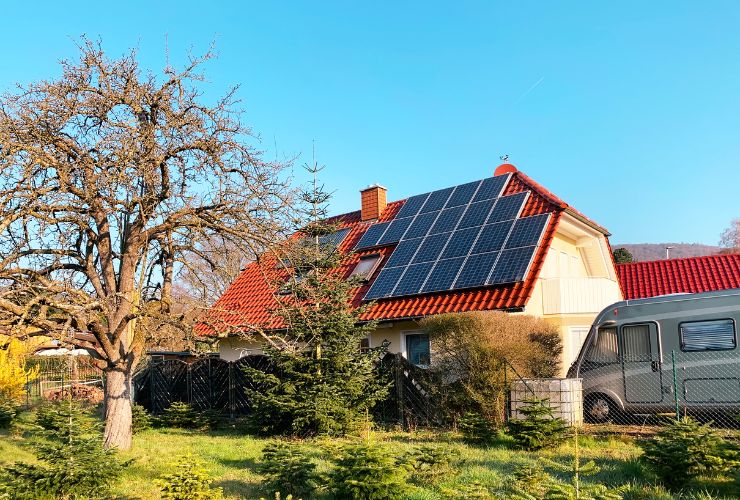
Some consumers can be misled
The assurance that the panel will continue to produce a specific percentage of its rated capacity even after decades can significantly impact decision-making for consumers and businesses. The performance warranty on paper reflects a manufacturer’s commitment not just to the physical durability of the product but also to its sustainable performance and contribution towards energy conservation over time.
While the actual percentage guaranteed by panel manufacturers isn’t always accurate, generally, they will guarantee 97 to 98% of the panel’s original output capacity in the first year. In subsequent years the warranty usually specifies between 0.5 to 0.7% degradation per year. At the end of the 25 years, you should expect your panels to be producing between 80 to 90% of the original power.
Testing performance
Accurately assessing the panel’s performance to the warranty percentage when installed on the roof is impossible without microinverters or optimisers installed, which undertake panel-level monitoring. In such a case one still has to have the manufacturer’s approval that they will accept this data.
To validate a performance warranty claim, most panel manufacturers typically demand the removal and shipment of the solar panel to an approved testing facility to confirm its reduced performance.
Claiming can be difficult
The actual cost of removing the panel, shipping it to the laboratory and having the test performed will cost a minimum of $500 and the homeowner will have to pay this bill, as he/she needs to prove there is an issue with the panel. So in such a case, the test will cost more than the value of a brand-new panel.
Additionally, the compensation, once assessed, can have limitations. For instance, if the panel only delivers half of its expected output, the manufacturer might offer compensation equivalent to half the panel’s price. Therefore, experts within the industry consider the performance warranty almost worthless. Instead, it should be seen as a guide to the likely long-term performance of a panel.
Claiming the performance warranty can be quite cumbersome and financially draining for the consumer. It also brings to light the inherent challenges of this “warranty” as it requires substantial evidence of the panel’s decreased performance, a feat that isn’t easily achievable given the cost and technical expertise required for accurate testing and verification.
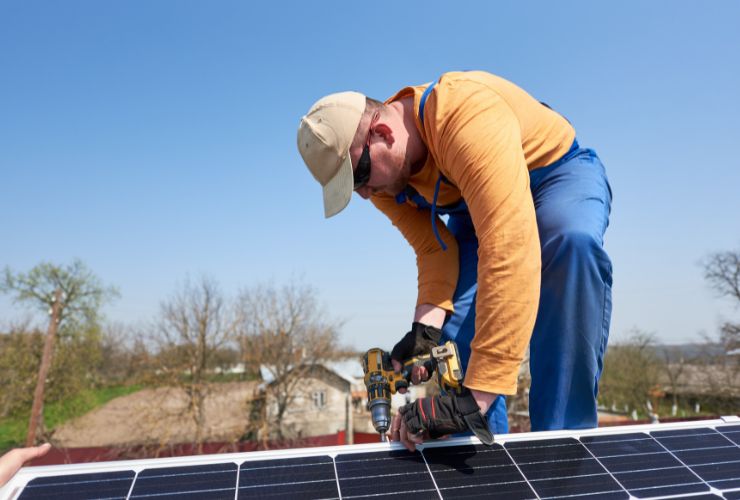
Product and performance warranty compared
As mentioned earlier, product warranties for some manufacturers are still shorter than the common 25-year performance warranty. Legally the product warranty takes precedence. If the product warranty is only 15 years and the performance deteriorates after 15 years due to a fault in the product, it will be difficult to claim the performance warranty because the failure in performance is actually due to the failure of the physical product for which the warranty has already expired.
While warranty documents are often in small print, long and boring we recommend studying them to see what they cover for example in regards to labour, and how they propose to assess and resolve issues when they arise. This will allow you to understand how easy it is to claim the warranty when issues arise.
How to avoid any warranty issues?
The best peace of mind situation you can get for your solar system is to buy good quality. A long warranty is not necessarily a representation of the quality of the product that you are buying, as in Australia too often manufacturers of poor quality products have given long warranties and then closed shop.
This will give you the lowest risk regarding likely issues during the product’s life. We recommend looking for quality brands that have a history in Australia and have Australian-based offices with many permanent staff, as well as have a history of looking after their products. In case of issues look past the warranty years offered and look for quality.
